Class 7 Maths Chapter 9 Rational Numbers NCERT Solutions
NCERT Solutions for Class 7 Maths Chapter 9 Rational Numbers Exercise 9.1
Ex 9.1 Class 7 Maths Question 1.
List five rational numbers between:
(i) -1 and 0
(ii) -2 and -1
(iii) \(\frac{-4}{5} \text { and } \frac{-2}{3}\)
(iv) \(\frac{1}{2} \text { and } \frac{2}{3}\)
Solution:
(i) -1 and 0
Converting each of rational numbers as a denominator 5 + 1 = 6, we have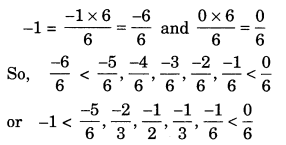
Hence, the required five rational numbers between -1 and 0 are \(\frac{-5}{6}, \frac{-2}{3}, \frac{-1}{2}, \frac{-1}{3} \text { and }-\frac{1}{6}\)
(ii) -2 and -1
Converting each of rational numbers as a denominator 5 + 1 = 6, we have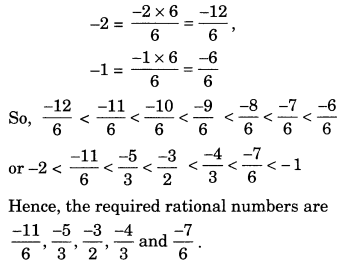
(iii) \(\frac{-4}{5} \text { and } \frac{-2}{3}\)
Converting each of the rational numbers as a denominator 5 × 3 = 15, we have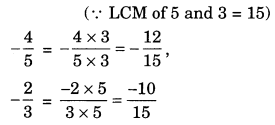
Since there is only one integer i.e. -11 between -12 and -10, we have to find equivalent rational numbers.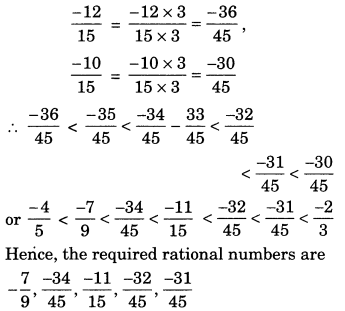
(iv) \(\frac{1}{2} \text { and } \frac{2}{3}\)
Converting each of the rational numbers in their equivalent rational numbers, we have
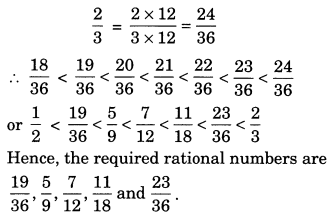
Ex 9.1 Class 7 Maths Question 2.
Write four more rational numbers in each of the following patterns: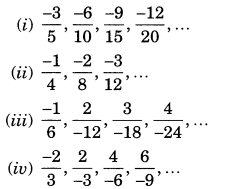
Solution: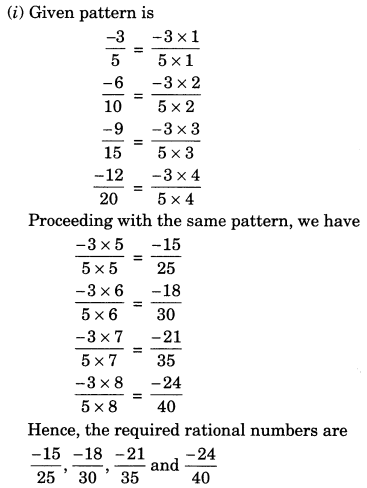
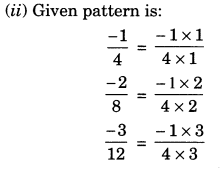
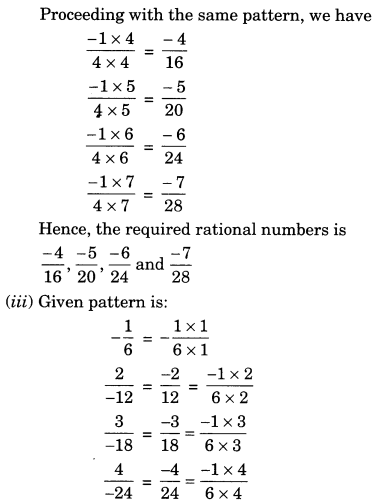
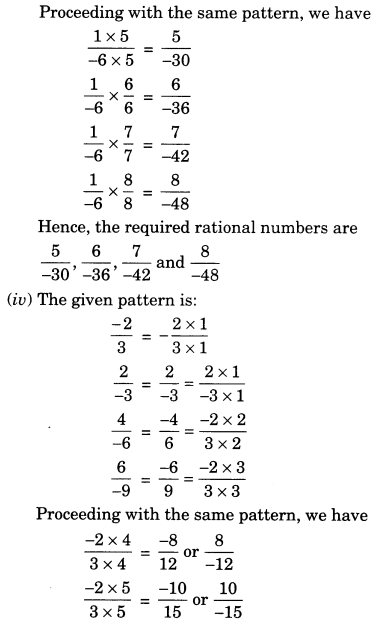
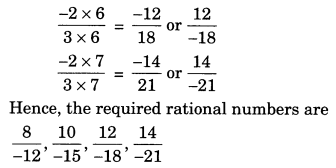
Ex 9.1 Class 7 Maths Question 3.
Give four rational numbers equivalent to:
Solution: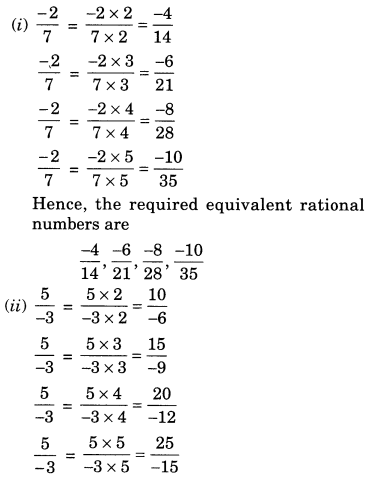
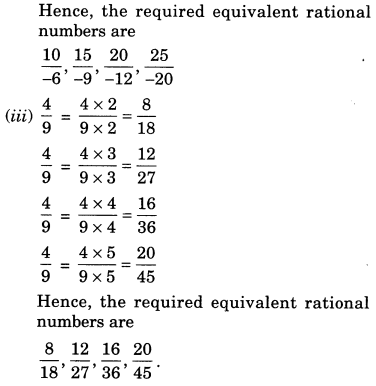
Ex 9.1 Class 7 Maths Question 4.
Draw a number line and represent the following rational numbers on it:
Solution: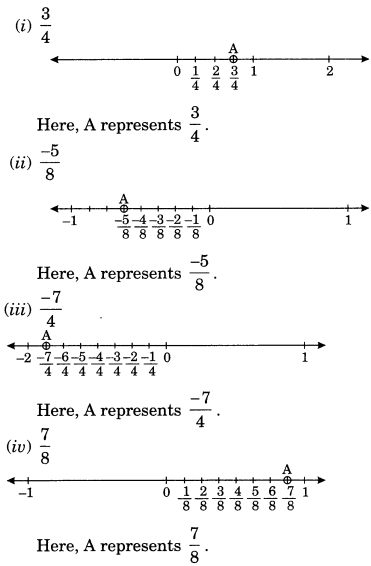
Ex 9.1 Class 7 Maths Question 5.
The points P, Q, R, S, T, U, A and B on the number line are such that, TR = RS = SU and AP = PQ = QB. Name the rational numbers represented by P, Q, R and S.![]()
Solution:
Rational numbers represented by P, Q, R and S.
\(\frac{7}{3}, \frac{8}{3}, \frac{-4}{3} \text { and } \frac{-5}{3}\) respectlvely.
Ex 9.1 Class 7 Maths Question 6.
Which of the following pairs represent the same rational number?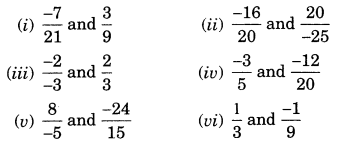
![]()
Solution: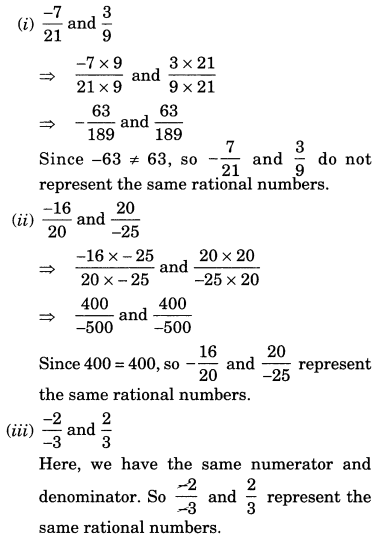
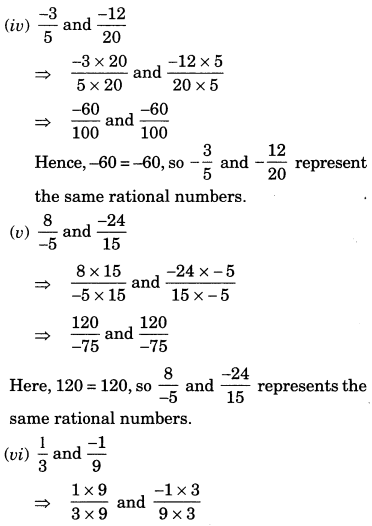
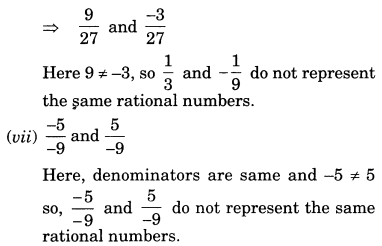
Ex 9.1 Class 7 Maths Question 7.
Rewrite the following rational numbers in the simplest form:![]()
Solution: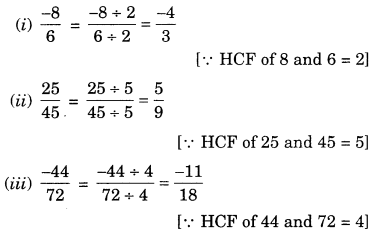
Ex 9.1 Class 7 Maths Question 8.
Fill in the boxes with the correct symbol out of >, < and =.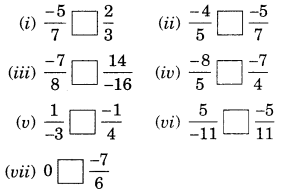
Solution: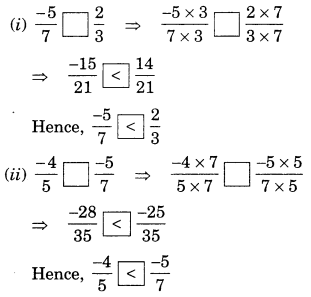
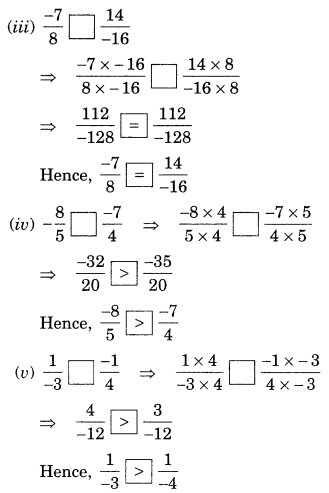
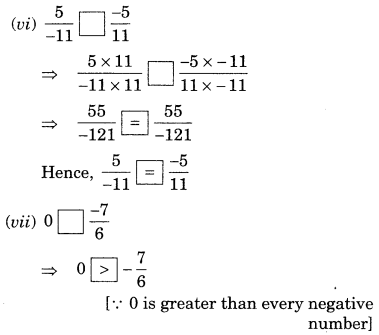
Ex 9.1 Class 7 Maths Question 9.
Which is greater in each of the following: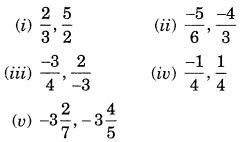
Solution: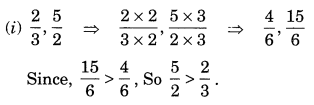
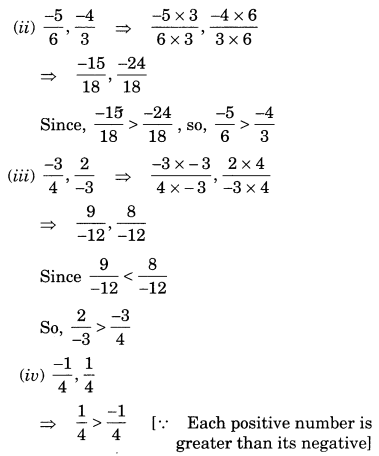
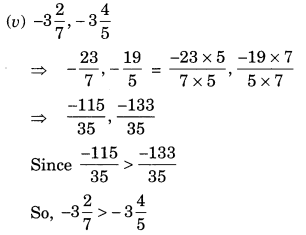
Ex 9.1 Class 7 Maths Question 10.
Write the following rational numbers in ascending order:
Solution: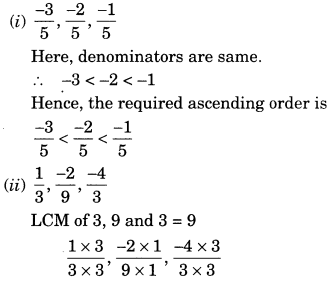
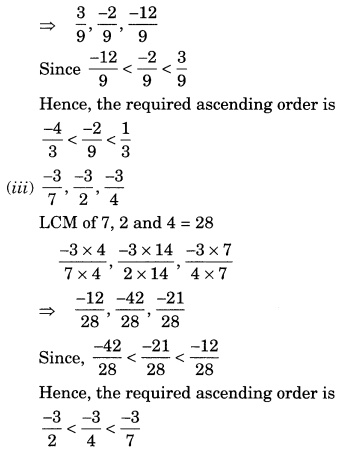
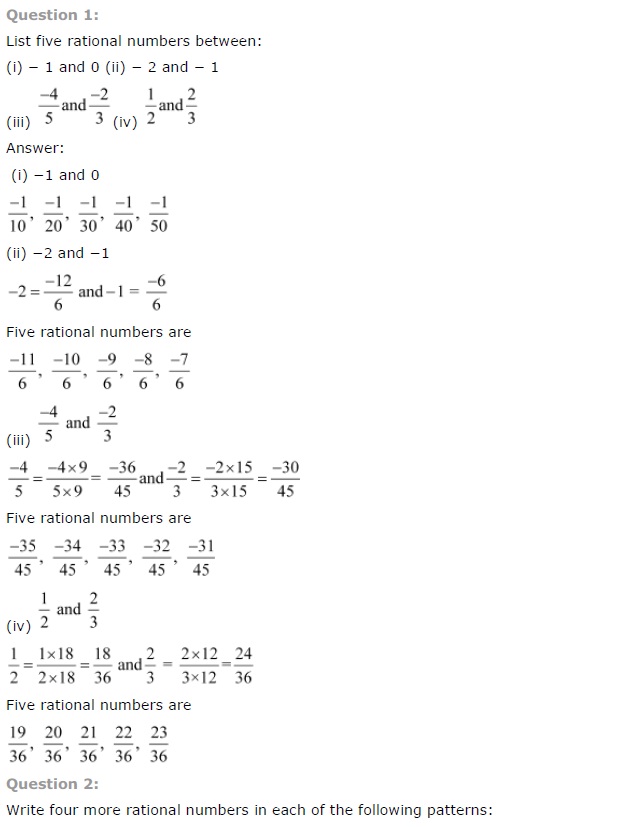
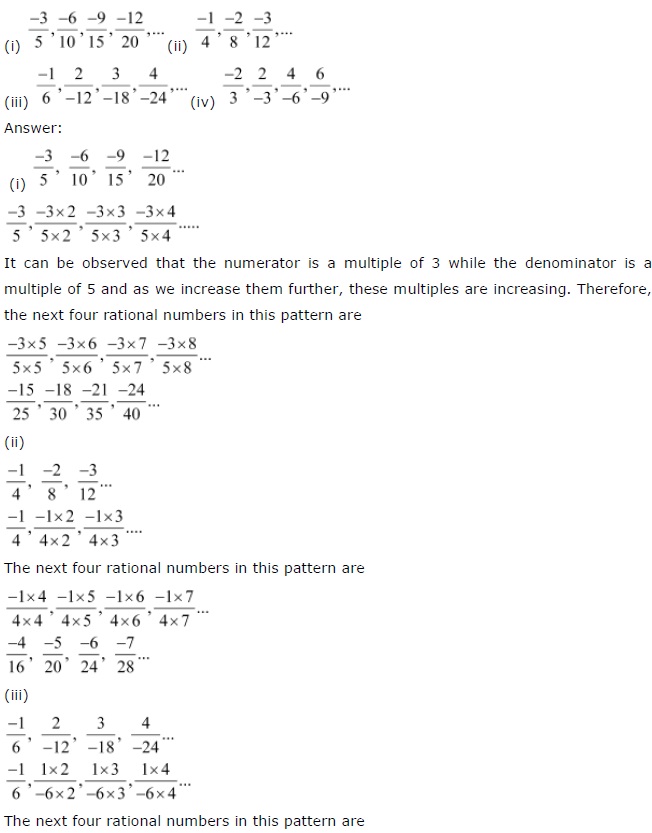
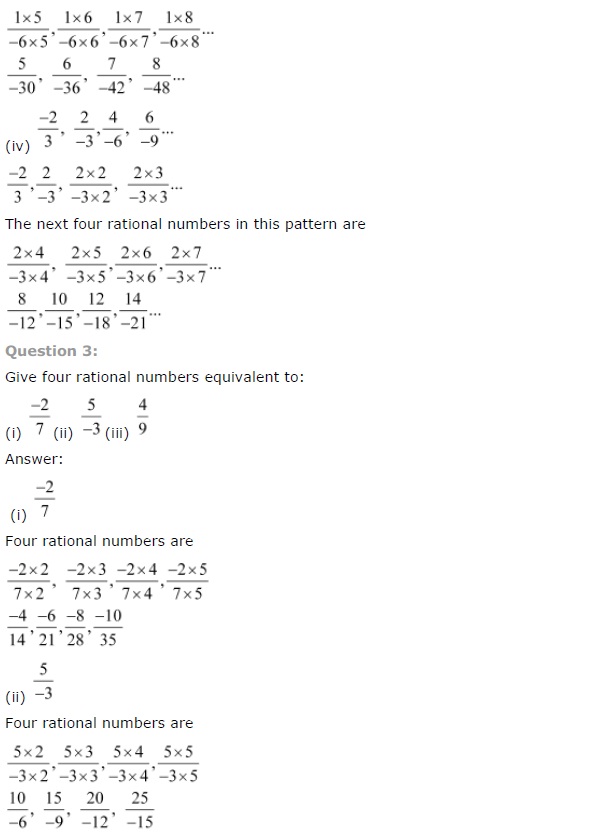
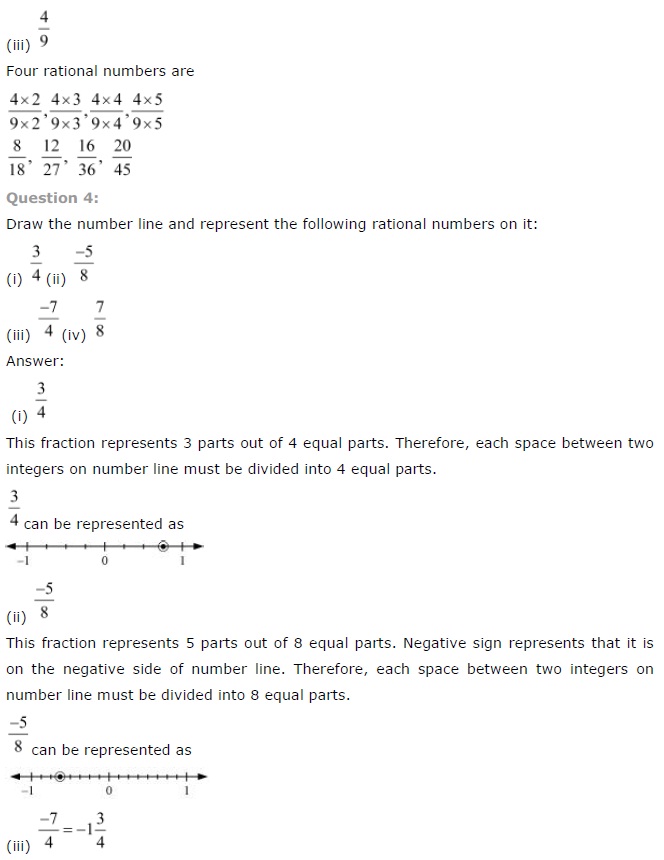
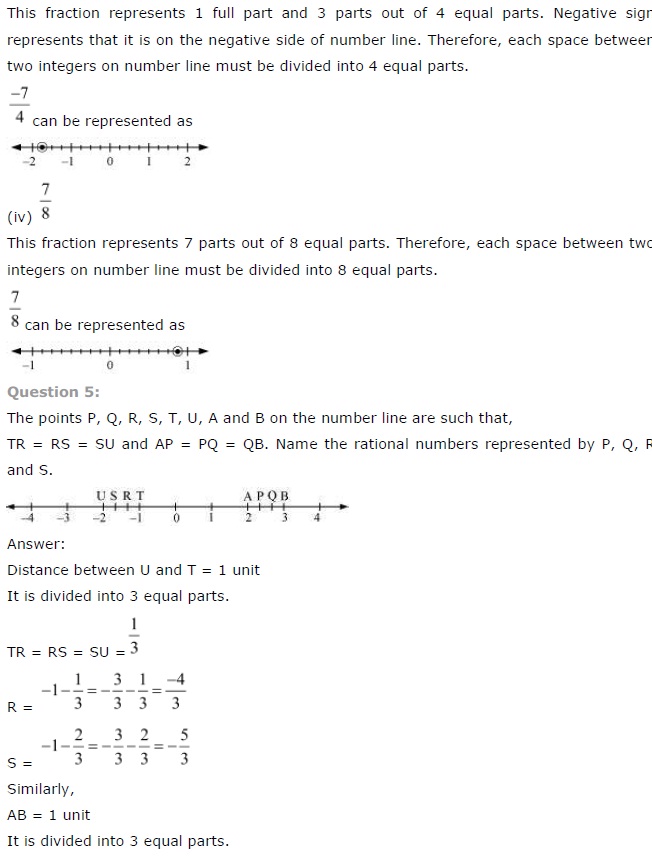
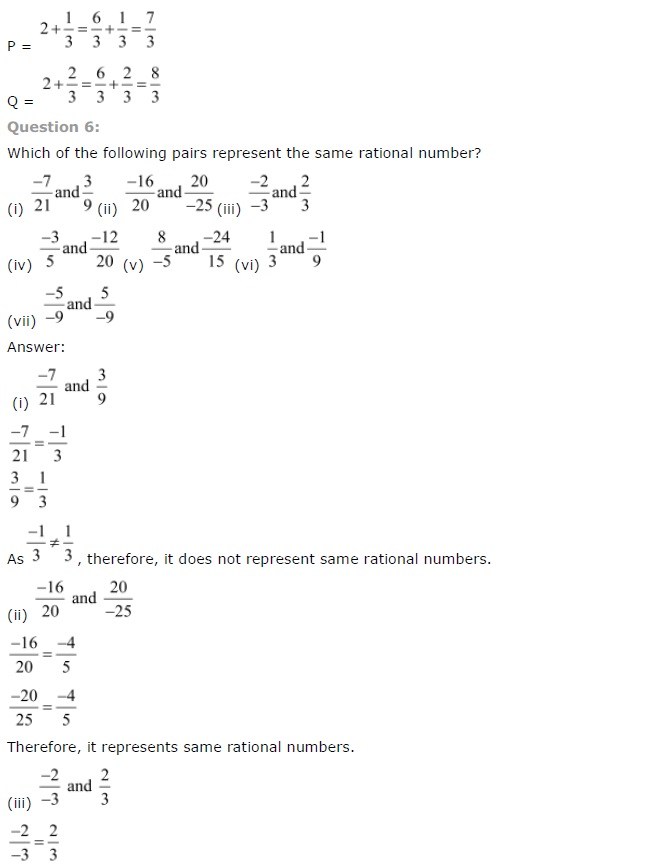
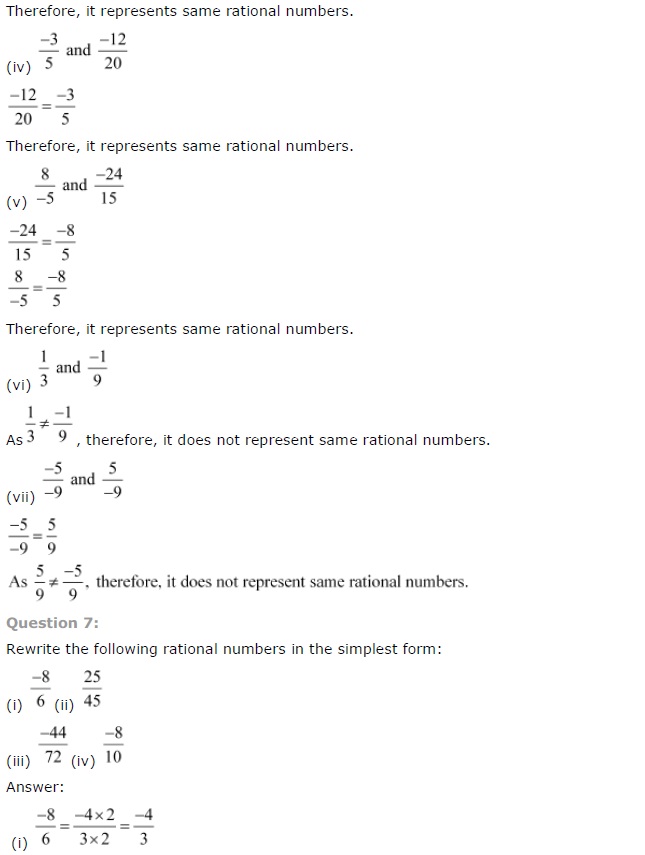
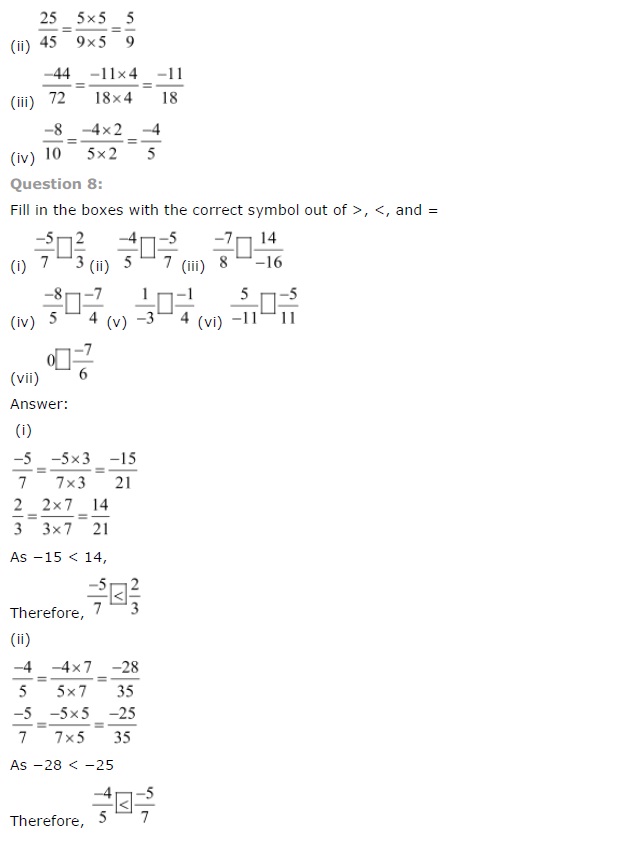
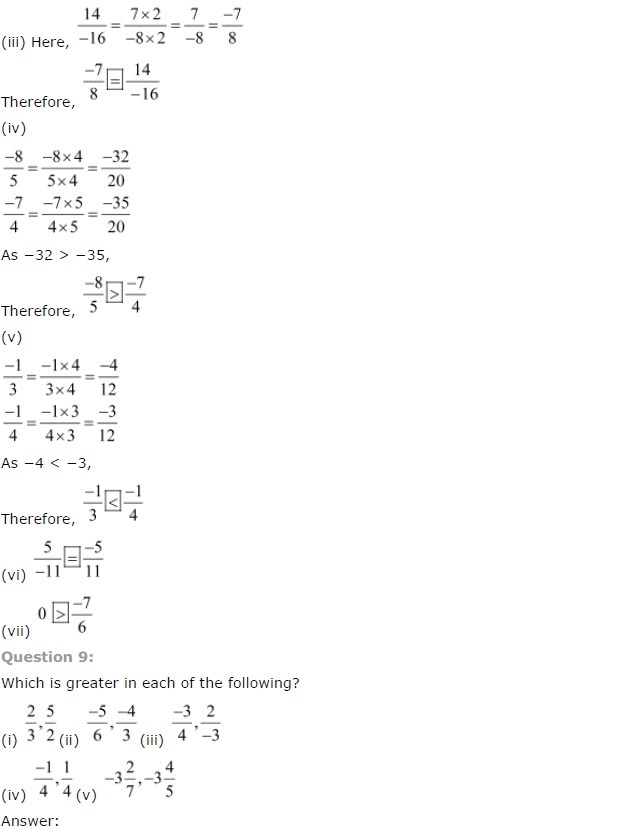
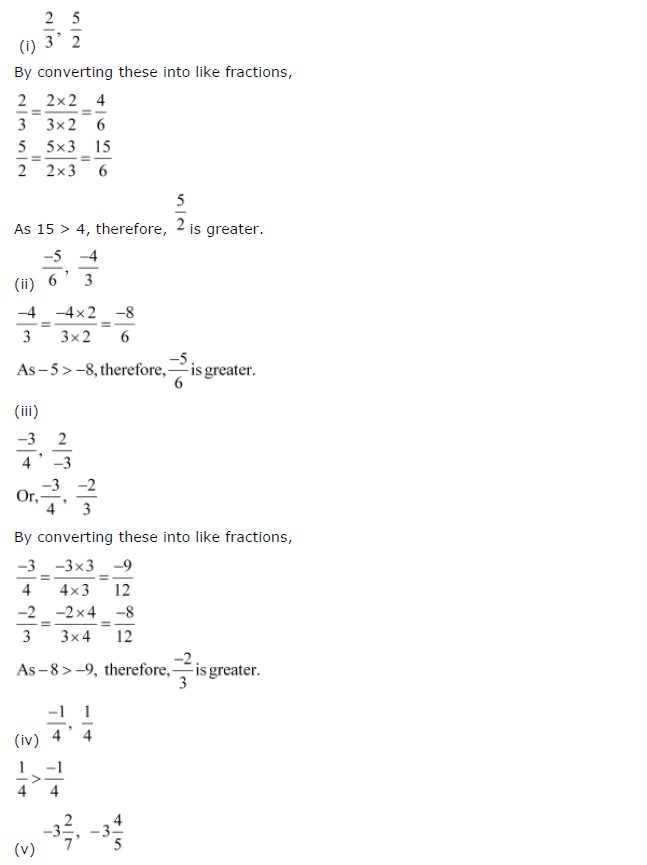
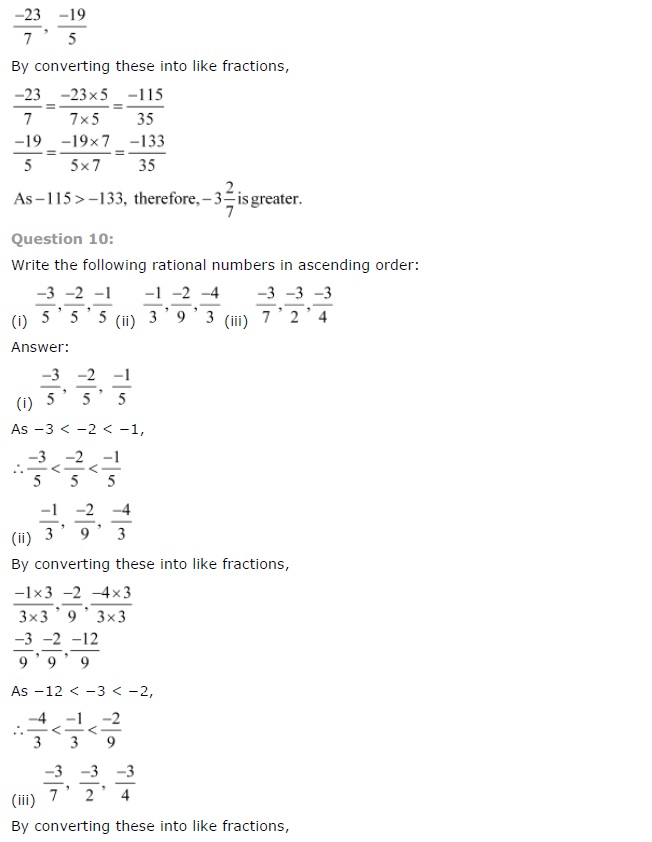

Class 7 Maths Chapter 9 Exercise 9.2
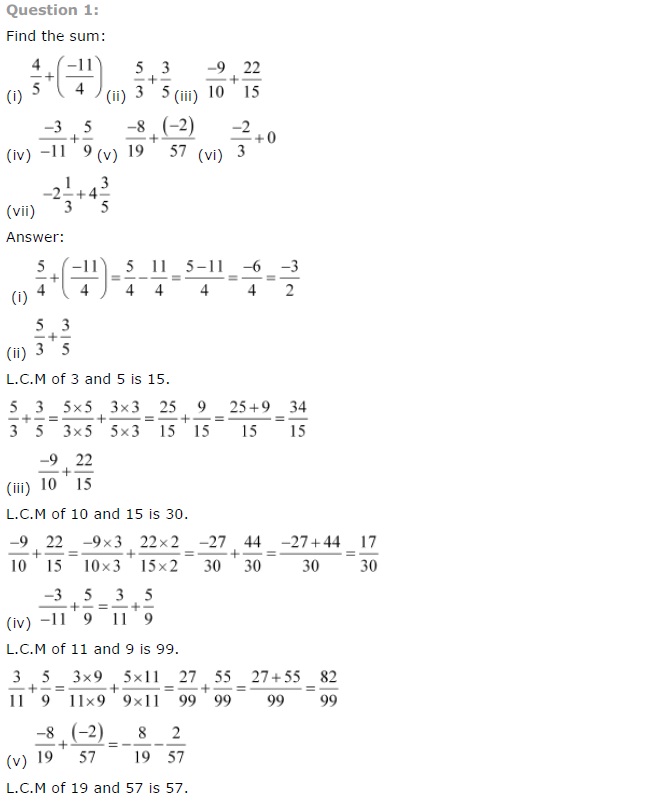
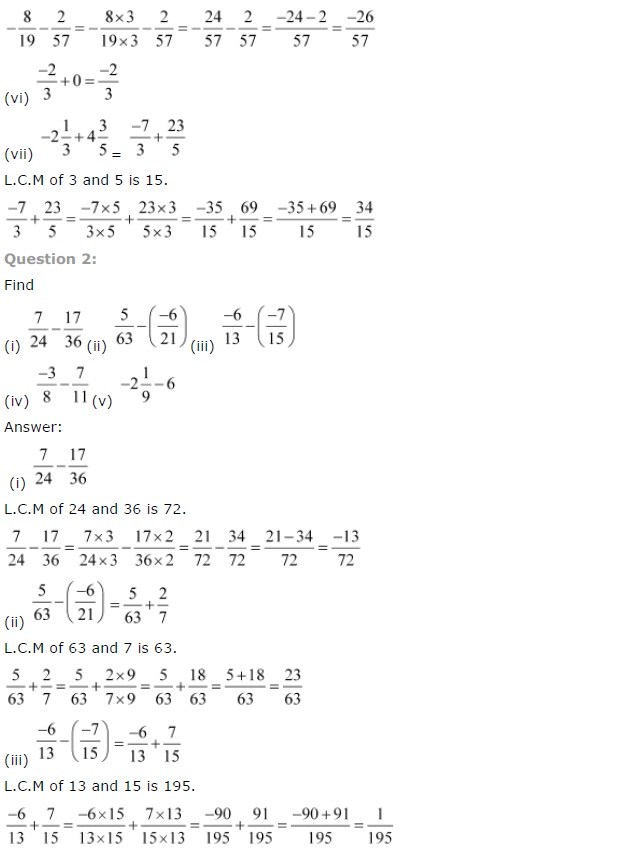
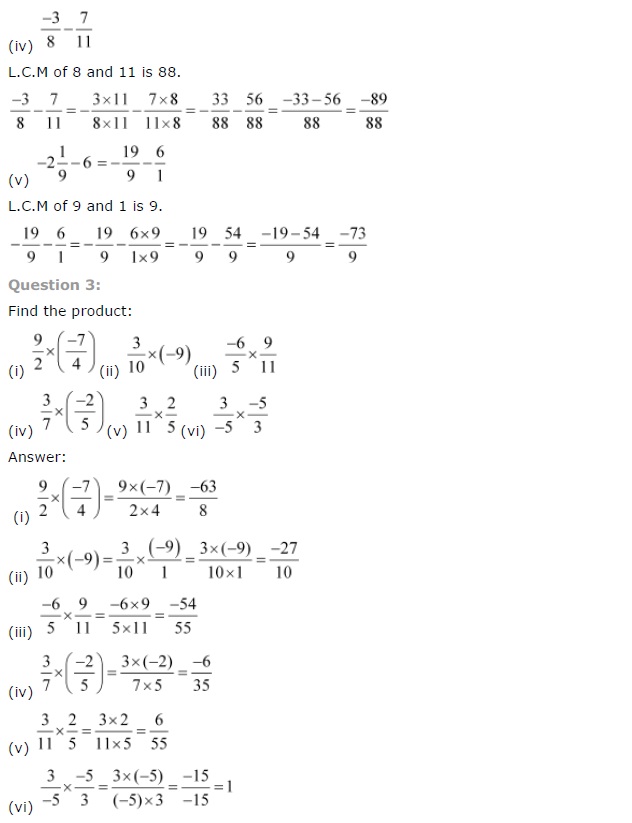
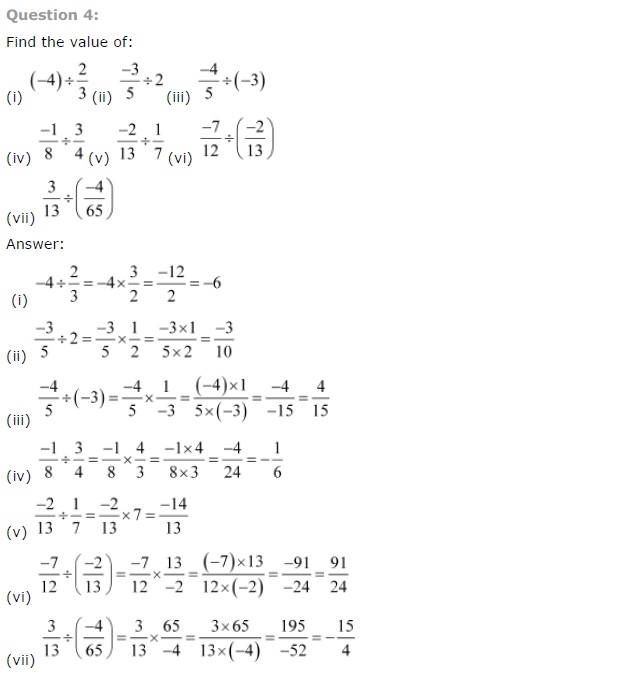
NCERT Solutions for Class 7 Maths Chapter 9 Rational Numbers Exercise 9.2
Ex 9.2 Class 7 Maths Question 1.
Find the sum: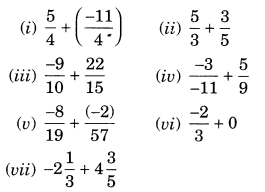
Solution.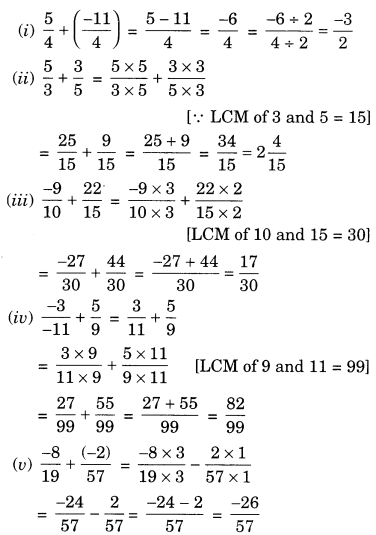
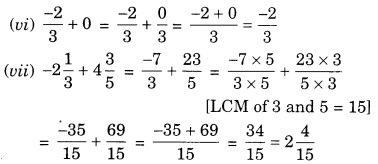
Ex 9.2 Class 7 Maths Question 2.
Find: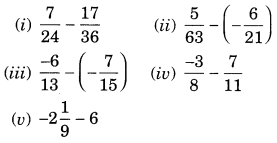
Solution: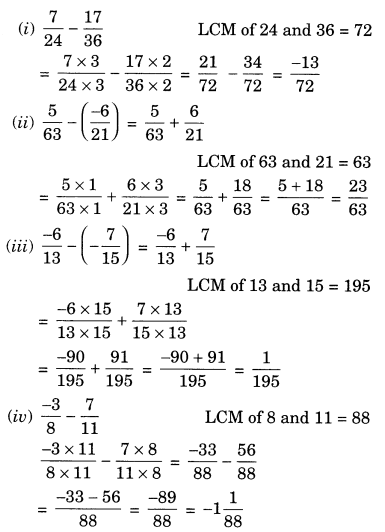
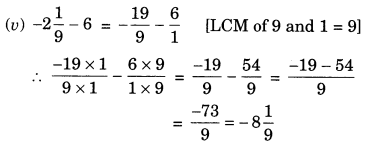
Ex 9.2 Class 7 Maths Question 3.
Find the product: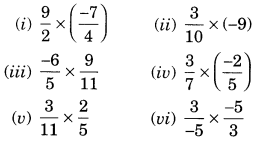
Solution: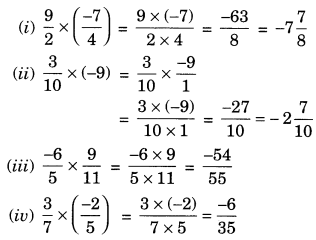

Ex 9.2 Class 7 Maths Question 4.
Find the value of: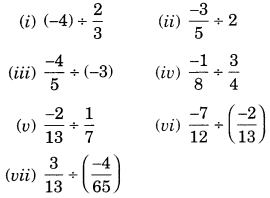
Solution: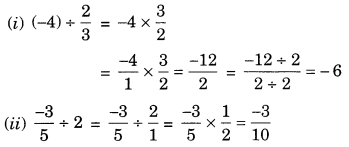
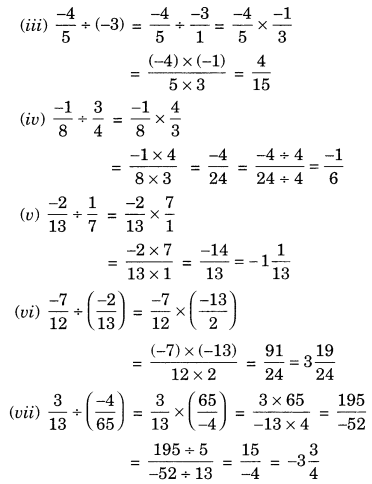




Rational Numbers Class 7 Extra Questions Very Short Answer Type
Question 1.
Find three rational numbers equivalent to each of the following rational numbers.
(i)
(ii)
Solution:
Question 2.
Reduce the following rational numbers in standard form.
(i)
(ii)
Solution:
Question 3.
Represent
Solution:
Question 4.
Which of the following rational numbers is greater?
(i)
(ii)
Solution:
Question 5.
Find the sum of
Solution:
Question 6.
Subtract:
Solution:

Question 7.
Find the product:
Solution:
Rational Numbers Class 7 Extra Questions Short Answer Type
Question 8.
If the product of two rational numbers is
Solution:
Let the required rational number be x.
Question 9.
Arrange the following rational numbers in ascending order.
Solution:
Question 10.
Insert five rational numbers between:
Solution:

Rational Numbers Class 7 Extra Questions Long Answer Type
Question 11.
Evaluate the following:
Solution:

Question 12.
Subtract the sum of
Solution:
Question 13.
Solution:
We have
Question 14.
Divide the sum of -2
Solution:
Question 15.
During a festival sale, the cost of an object is ₹ 870 on which 20% is off. The same object is available at other shops for ₹ 975 with a discount of 6
Solution:
The cost of the object = ₹ 870
Discount = 20% of ₹ 870 =
Selling price = ₹ 870 – ₹ 174 = ₹ 696
The same object is available at other shop = ₹ 975
Selling price = ₹ 975 – ₹ 65 = ₹ 910
Since ₹ 910 > ₹ 696
Hence, deal at first shop is better and by ₹ 910 – ₹ 696 = ₹ 214
Rational Numbers Class 7 Extra Questions Higher Order Thinking Skills (HOTS) Type
Question 16.
Simplify:
21.5 ÷ 5 –
Solution:
Using BODMAS rule, we have
21.5 ÷ 5 –
= 21.5 ÷ 5 –
= 21.5 ×
= 4.3 – 3 + 4.25
= 4.3 + 4.25 – 3
= 8.55 – 3
= 5.55
Question 17.
Simplify:![]()
Solution:
Using BODMAS rule, we have
2.3 – [1.89 – {3.6 – (2.7 – 0.77)}]
= 2.3 – [1.89 – {3.6 – 1.93}]
= 2.3 – [1.89 – 1.67]
= 2.3 – 0.22
= 2.08
Question 18.
Solution:
Using BODMAS rule, we have

.png)
.png)